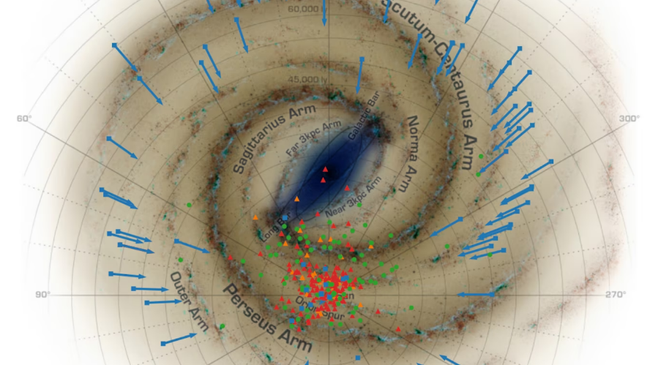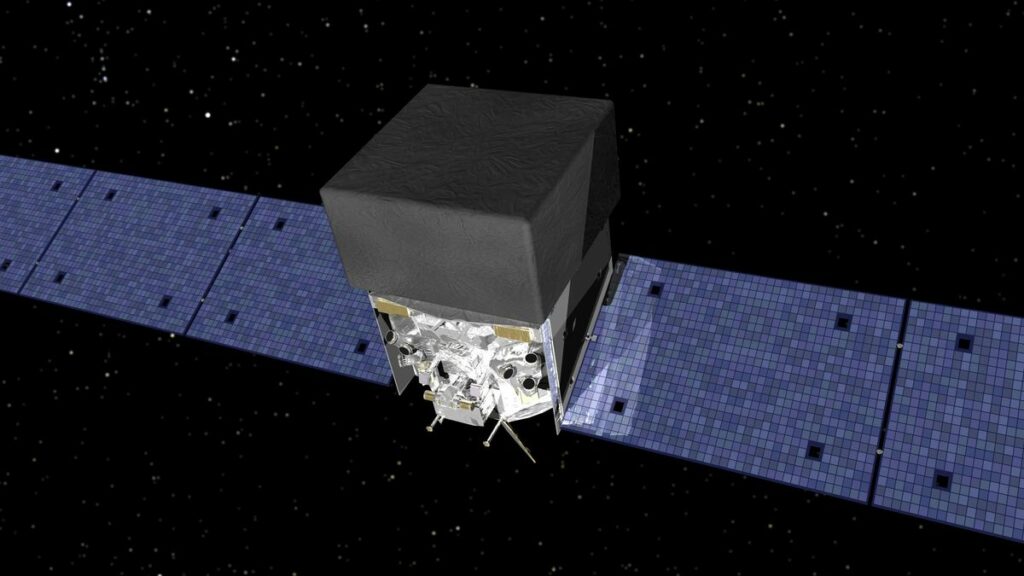Discovery of 300 Neutron Stars Emitting Gamma Rays, Including ‘Spider Pulsars,’ in Extensive Survey
Nestled among the extensive collection of recently discovered pulsars are various “spider pulsars,” neutron stars known for consuming their companion stars.
The Fermi gamma-ray space telescope has identified approximately 300 rapidly rotating neutron stars. Each of these newly discovered objects emits two beams of radiation, resembling a cosmic lighthouse sweeping across the universe.

These neutron stars, classified as millisecond pulsars, exhibit rotations of hundreds of times per second. Before Fermi’s launch in 2008, fewer than ten instances of such celestial bodies were known to humanity. Their significance lies in their emission of high-energy electromagnetic radiation in the form of gamma-rays. Notably, within this collection of unprecedented neutron stars are several “spider pulsars,” believed to consume their companion stars, akin to how black widow spiders devour their mates.
Matthew Kerr, an astrophysicist at the Naval Research Laboratory, expressed excitement about the detection of numerous millisecond pulsars using gamma rays. These high-speed pulsars serve as precise timekeepers in the cosmos, forming what is known as “pulsar timing arrays.”
Describing these millisecond pulsars as “timekeepers,” Kerr points to their precise periodic rotations, allowing them to function as cosmic clocks for deep space events. Similar to all neutron stars, these rapidly spinning millisecond pulsars originate when massive stars exhaust their nuclear fusion fuel, leading to the cessation of energy flow from their cores. This triggers a massive supernova explosion, with the outer material expelled, and the core compressed to the width of approximately 12 miles, resulting in the formation of a neutron star.
The reduction in the star’s size contributes to the extreme characteristics of neutron stars, such as incredibly dense neutron-rich matter, with a tablespoon weighing a billion tons on Earth. Their intense magnetic fields emit gamma-ray beams detected by Fermi as periodic pulses. As neutron stars age, they decelerate, experiencing a weakening of their magnetic fields and a slower spin. However, when these deceased stars exist in a binary system, they can undergo a rejuvenation process.
“We can study these objects that initially started as young pulsars in a binary system,” Kerr explained. “Similar to a spinning top, they eventually slowed down and became inert. Over hundreds of millions of years, their binary companions deposited matter onto them, dramatically and rapidly increasing their speed, effectively ‘recycling’ these pulsars into millisecond pulsars.”

Hunting cosmic spiders
A captivating aspect of these recent pulsar findings revolves around the prevalence of “spider pulsars.” Coined for their resemblance to post-copulation black widows, these neutron stars exhibit a behavior where they consume their binary companion stars.
Explaining the nomenclature, Megan DeCesar, a scientist at George Mason University and a member of the discovery team, stated, “Spider pulsars are named after arachnids that eat their smaller mates. Something similar can occur when a neutron star and its binary companion are in close proximity, and the millisecond pulsar ‘recycling’ process becomes quite intense.”
The significant radiation and particle wind emitted by the pulsar erode the surface of the companion star, resulting in a cloud of evaporated material, likened to a puffball. Fermi stands out in detecting these spider pulsars compared to other radio telescopes because radio waves from the neutron stars may be obstructed when pulsar beams traverse the remnants of the consumed stars. In contrast, high-energy gamma rays, Fermi’s specialty, can penetrate the stellar debris.
DeCesar emphasized, “While it’s possible that spider systems inherently emit brighter gamma rays, studying them will enhance our understanding of their origins and contribute to the wealth of discoveries facilitated by Fermi.”
How to use a cosmic clock
A recent instance of utilizing millisecond pulsars as highly accurate cosmic timekeepers involved measuring minuscule temporal fluctuations induced by the passage of low-frequency gravitational waves—small ripples in spacetime generated by distant events like black hole mergers and neutron star collisions.
Expressing enthusiasm about these findings, Thankful Cromartie, a National Research Council Research Associate at the Naval Research Laboratory, remarked, “These results are incredibly exciting. Low-frequency gravitational waves provide us with the ability to peer into the cores of massive galaxies and gain a deeper understanding of their formation.”
In the future, pulsar timing arrays could serve navigation purposes, employing rapidly spinning neutron stars as cosmic GPS systems for guidance beyond Earth’s surface. However, achieving this requires researchers to ascertain the stability of such pulsars, a aspect that this discovery could potentially contribute to.
A paper about the 300 new neutron stars was published on Nov. 27 in the Astrophysical Journal.
Do not forget to share your opinion with us to provide you with the best posts !



0 Comments